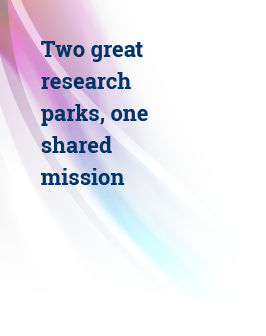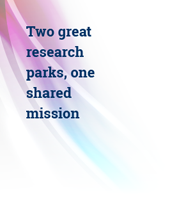Steward Observatory Research and Development Activities Branch Out to Utilize Opportunities with UA Tech Park
Tech Parks Arizona is pleased to announce that the University of Arizona (UA) Engineering and Technical Services for the Steward Observatory and the James C. Wyant College of Optical Sciences is expanding their research and prototyping operations by developing an outpost at the UA Tech Park.
With the University of Arizona’s significant telescope work both through the James C. Wyant College of Optical Science and Steward Observatory, the two teams merged research groups and concentrated their activities. This ultimately led to more production and the outgrowing of the Richard F. Caris Mirror Lab and the Large Optics Shop at main campus.
Due to their success, they needed more space to scale up their research and development activities. With the need to expand and their current space being restrained at a minimum, Steward Observatory sought a similar campus that would accommodate their needs quickly to serve as a secondary outpost.
That is when Jeff Kingsley, Associate Director of Steward Observatory, decided to reach out to the UA Tech Park to see what type of facilities were available. Conveniently, office and research and development spaces were turn-key ready, complete with UA branding in place. The UA Tech Park was a perfect fit and management facilitated a quick move in for the team, allowing their research expansion to grow at the level demanded.
The Steward team at the UA Tech Park totals 30 employees, including mechanical, electrical and software engineers as well as a number of program managers, system engineers and a variety of technicians.
Steward Observatory occupies a variety of space at the UA Tech Park for research and development, technical analysis, meetings and large telescope storage space. Their projects include scientific research, such as surveys, near earth objects and space awareness.
Researchers and technicians from the Steward Observatory are currently qualifying the control system for the M3 Tertiary Mirror Rotator and Positioner for the Tokyo Atacama Observatory Telescope. The telescope will be located on the summit of Cerro Chajnantor in the Atacama Desert of northern Chile at an altitude of 18,500 feet – the highest permanent astronomical observatory in the world.
“The UA Tech Park campus is a great environment and complements our activities. It is similar to campus with natural areas of opportunity to interact with industry professionals,” said Jeff Kingsley, Associate Director of Steward Observatory. “We are looking into hosting monthly science talks to connect with the 6,000 knowledge workers on campus and spark new collaborations with tech giants like IBM and Raytheon.”
Steward is using their satellite campus at the UA Tech Park to interact with university, government and industry professionals for telescope and mirror collaborations. Steward is also leading the Arizona Large Telescope Consortium, a group of university and industry professionals with similar research interest that analyze information from across the state.
About Tech Parks Arizona
Tech Parks Arizona brings together university, industry, and community creating “interactive ground” to advance technology commercialization. Tech Parks Arizona directs the UA Tech Park at Rita Road, the UA Tech Park at The Bridges and the University of Arizona Center for Innovation, placing the highest priority on recruiting companies desiring connectivity to the University of Arizona.
About Steward Observatory
The University of Arizona Steward Observatory and its associated academic division, the Department of Astronomy, form one of the finest centers for astronomical studies in the world. Steward Observatory was officially established in 1916 through the foresight and perseverance of its first director, Andrew Ellicott Douglass. Astronomers here are among the national and international leaders in observational and theoretical research in astronomy. At the same time, they are making breakthroughs in related technology development -- from new light detectors to giant telescope mirrors -- that promise to be a catalyst for a renaissance in optical and infrared astronomy. Steward Observatory scientists also have key roles in major space astronomy missions, including the Hubble Space Telescope and the Space Infrared Telescope Facility.















